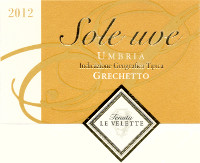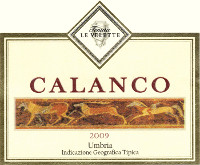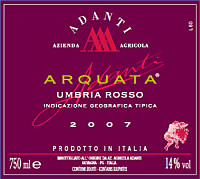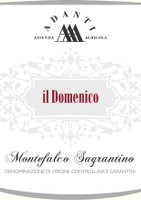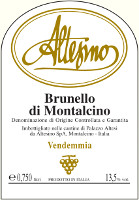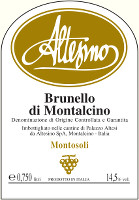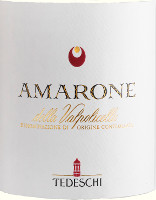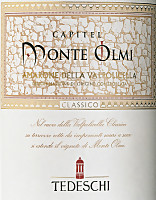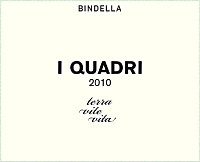|
White, rose, sparkling and red. It is not so difficult to find these style of
wines made from Pinot Noir. Even sweet, although there are very few and rare
examples of wines produced with dried Pinot Noir, this famous variety from
Burgundy shows its elegance also in this particular style. From a purely
theoretical point of view, every red berried grape can be used for the
production of every wine style. By just considering theory, all the red grapes
in fact have sugar, acidic and polyphenolic substances, each of them being
fundamental for the production of every wine style. From this point of view,
this purely theoretical condition is easily denied by practice, as not all the
red grapes have such a high versatility. All of them, undeniably, can be used
for the production of red wines, but only few of them can successfully make
other wine styles, enologically speaking.
Each element, fundamental for the production of each wine style, is variable
both in quantity and quality in function of ripeness and the specific variety.
In particular, the availability and the ratio between acidic substances and
sugar is strongly determined by the period of ripeness. In unripe grapes,
acidic substances prevail over sugar, a condition becoming the opposite as the
grape ripens. The riper the grape, the higher the quantity of sugar and lower
the quantity of acidic substances. An evolution having its limit in the
specific qualities of a grape, as not all the varieties have the same quantity
of sugar and acidic substances. For example, Pinot Noir has a higher content in
acidic substances than Merlot which, in turn, has a higher quantity of
polyphenolic substances.
The quality of polyphenolic substances - mainly responsible, among the many
things, for color and astringency in red wines - can change according to the
variety of grape and ripeness. Not all the grapes have in fact the same
quantity of polyphenolic substances and also the intensity of astringency and
color can change in function of the variety. The astringent sensation of
polyphenolic substances - like already said - also changes according to the
ripeness of the grape: harsher and more astringent when the grape is unripe,
rounder and gentle at full ripeness. It should also be noticed that,
from a theoretical point of view, the presence of polyphenolic substances can
be strongly reduced - or even eliminated - by separating the skin from the must
soon after crushing. In case we are not going to correct the must and wine with
proper and legal procedures, the wine making versatility is therefore
limited to the specific characteristics of each grape variety.
The enological success of a grape variety in function of the style is mainly
determined by the sensorial balance of the wines it produces. A result which is
obtained by the contrast of the so called round and hard substances to which is
added, in red wines, the contribution of polyphenols' astringency. We should
remind round substances of a wine are represented by alcohol,
polyalcohols and sugar. Hard substances of a wine are represented by
acids, polyphenols and mineral salts. The balance in white wines can be
simply defined as the opposition of round and hard substances, ideally
set in opposite sides, each of them trying to move the balance point to its
side. The balance of sparkling wine is substantially defined like that, while
noticing to the hard substances is also added carbon dioxide,
responsible of wine effervescence.
|
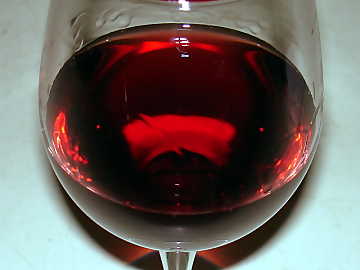 | |
| Pinot Noir vinified in red is
characterized by a pretty high transparency and a moderate intensity of color | |
|
The definition of balance in rose wines is not so different from this model,
whereas for red wines it is preferred applying a different model. The
discriminating factor is represented by polyphenolic substances, despite they
are considered as hard, it is preferred to consider them as a special
case. In red wines we will therefore have a balance model defined by three
sides, putting the astringency in a specific one. The need for such a model
depends on the strengthening and mutual effect polyphenolic and acidic
substances play on the other ones. Acidity tends in fact to amplify the
sensation of astringency which, on its turn, tends to amplify acidity. In this
sense, even carbon dioxide plays a similar role in amplifying the sensations of
these two substances.
By following these models of balance, it is evident how a red wine cannot be
both acidic and astringent, as it would clearly be unbalanced in favor of
“hard” substances and they would mutually amplify one each other. This
condition can be balanced by increasing round substances, alcohol and
polyalcohols in dry wines, sugar in sweet ones. This is in fact the case of
wines produced with Nebbiolo - a grape known for being rich in polyphenolic and
acidid substances - which are usually characterized by a high alcohol content
and the aging in wood contributes to their roundness. Time plays a role in
balance as well, in particular in the aggressive effect of polyphenolic
substances, making them rounder and less harsh, a condition lowering the
sensation of hardness in a wine. Finally, it should also be noticed the
presence of residual sugars - a condition which can also happen in table wines
- contributes to the lowering of strength of hard substances.
The case of Pinot Noir is pretty special as the quality and quantity of the
substances contained in its berries make them particularly versatile. The main
factors of this versatility are the high content in acidic substances and the
relatively low quantity of polyphenolic substances. When used for the
production of red wines - the style that, at least in theory, should be the
most obvious one - Pinot Noir is characterized by an elegant acidity and
moderate astringency, two very appreciated characteristics to the ones who love
this grape. Moreover, it is right this particular condition, as well as its
characteristic aromas, to thrill Pinot Noir lovers by recognizing to it an
unequaled class and elegance. For the sake of truth, this is the very same
reason making it insignificant to many other wine lovers, usually the ones
looking for strong emotions.
Acidity in Pinot Noir is fundamental for the production of white and sparkling
wines. In white wines produced with red grapes, such as Pinot Noir, the
coloring of the must is avoided by removing skins soon after crushing,
therefore preventing the contact. As it is commonly known, the color in red
wines is determined by the maceration of the must with skins in which are found
coloring substances. The fermentation done with skins contributes to the
extraction of coloring substances because of the progressive increasing of
alcohol and temperature. In white wines produced with Pinot Noir, balance is
therefore obtained thanks to the presence of alcohol and acidic substances.
Acidity, as it is commonly known, is a desired quality in white wines, on the
contrary, its lack determines an excessive flatness and roundness. As opposed
to many white berried grapes, Pinot Noir contributes to white wines with an
evident structure.
The characteristic structure Pinot Noir gives to its white wines is also
important in sparkling wines. For example, we can consider two classic method
sparkling wines, made by the same winery and possibly having the same period of
aging in bottle. The first one produced with white berried grapes only, the
second one produced with the same grapes to which is added Pinot Noir. In case
we are considering a Champagne or Franciacorta, in the first wine we will have
Chardonnay only, whereas in the second one, to this grape may have also been
added Pinot Blanc. By tasting the wines, the contribution of Pinot Noir is
evident and immediate: the second sparkling wine, in general terms, will be
characterized by a fuller body and, very likely, a more intense color as well.
It should also be noticed structure is also determined by the time of aging
in bottle prior to disgorging and the contribution of yeasts.
The considerations expressed for white wines are applied, in general terms, to
rose wines as well. The particular production technique, providing for the
contact of the must with the skin for few hours, gives rose wines produced with
Pinot Noir pretty pale pink colors, rarely intense. It should also be
considered sometimes the wines produced with this grape are obtained by using
the bleeding technique and, in these cases, the color could get darker and more
intense hues. Bleeding is the technique used for increasing the body and color
in red wines, by subtracting part of the must soon after the starting of
fermentation which, in that moment, has a pink color. In both cases, the
contribution of polyphenolic substances is pretty limited. It will be the
crispness and acidity of Pinot Noir to play an important role in its rose
wines: a typical and desired characteristic both in rose and white wines.
Sweet wines produced with Pinot Noir are to be considered as an absolute rarity
and their spreading is very limited. One of the essential factors capable of
giving sweet wines their balance is represented by acidity. A too sweet wine
would be, in fact, not very pleasing and evidently sickly. In this
sense, the evident acidity of Pinot Noir is very effective in balancing the
sweetness in these type of wines. If we consider, in fact, the low contribution
in astringency of Pinot Noir, sweetness finds its balance with acidity, while
giving the wine an absolutely lively and elegant character. According to an
olfactory point of view - as well as to the production technique - sweet
wines produced with Pinot Noir get pleasing and lovely aromas of red fruit
jams, such as cherry, strawberry and raspberry, in particular. A rare wine very
difficult to find however capable of giving magnificent satisfactions to our
senses.
Pinot Noir, despite its undeniable wine making versatility, is mainly
associated to what it is considered its most noble style: red wine. Loved or
hated, Pinot Noir vinified in red has die-hard supporters as well as convinced
detractors. It should be noticed not all of the Pinot Noir wines are capable of
giving pleasing emotions, as - in order to give its best - this grape needs
particular environmental and viticultural conditions. Known for being among the
most difficult varieties to be cultivated - something which certainly is true -
also in the winery Pinot Noir is a grape which does not accept compromises.
This variety in fact needs the highest quality standards, an essential
condition in order to make a great Pinot Noir. Finally, it should be noticed
Pinot Noir cultivated in unfavorable areas and vinified with a scarce
attention, always give a mediocre wine having no character, so different from
the elegant and extraordinary greatness of this magnificent Burgundian grape.
|


